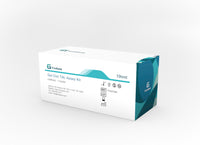
# Endotoxin Testing with LAL Reagents: Principles and Applications
## Introduction to Endotoxin Testing
Endotoxin testing is a critical quality control measure in the pharmaceutical and medical device industries. Bacterial endotoxins, which are lipopolysaccharides (LPS) found in the outer membrane of Gram-negative bacteria, can cause severe pyrogenic reactions in humans if present in injectable drugs or medical devices.
## Understanding LAL Reagents
The Limulus Amebocyte Lysate (LAL) test has become the gold standard for endotoxin detection. LAL reagents are derived from the blood of the horseshoe crab (Limulus polyphemus), which contains amebocytes that react sensitively to endotoxins.
### Types of LAL Reagents
There are three main types of LAL reagents used in endotoxin testing:
– Gel-clot LAL
– Turbidimetric LAL
– Chromogenic LAL
## Principles of LAL Testing
The LAL test works based on a cascade of enzymatic reactions that occur when endotoxins come into contact with the LAL reagent. This reaction leads to either gel formation (gel-clot method), turbidity (turbidimetric method), or color development (chromogenic method), depending on the type of test used.
### The Reaction Mechanism
The endotoxin detection process involves several key steps:
1. Endotoxin activates Factor C in the LAL reagent
2. Activated Factor C activates Factor B
3. Activated Factor B activates the proclotting enzyme
4. The proclotting enzyme converts coagulogen to coagulin
5. Coagulin forms a gel clot (or produces measurable turbidity or color change)
## Applications of LAL Reagents
LAL reagents are widely used in various industries and applications:
### Pharmaceutical Industry
– Testing of parenteral drugs
– Quality control of water for injection
– Validation of depyrogenation processes
### Medical Device Industry
– Testing of implantable devices
– Evaluation of dialysis equipment
– Quality assurance of surgical instruments
### Biotechnology
– Monitoring of cell culture media
– Testing of recombinant proteins
– Validation of purification processes
## Advantages of LAL Testing
The LAL test offers several significant advantages over traditional rabbit pyrogen tests:
– Higher sensitivity (can detect pg/mL levels of endotoxin)
– Faster results (typically 30-60 minutes)
– More cost-effective
– Requires smaller sample volumes
– Better reproducibility
## Regulatory Considerations
LAL testing is recognized by major pharmacopeias and regulatory agencies worldwide:
– United States Pharmacopeia (USP)
– European Pharmacopoeia (EP) 2.6.14
– Japanese Pharmacopoeia (JP) 4.01
– FDA guidelines for endotoxin testing
Keyword: LAL Reagents for Endotoxin Testing
## Future Perspectives
As the demand for safer pharmaceuticals and medical devices grows, LAL testing continues to evolve. Recent developments include:
– Recombinant Factor C (rFC) alternatives
– Automated LAL testing systems
– Improved sensitivity for low-endotoxin recovery (LER) samples
– Integration with quality-by-design (QbD) approaches
## Conclusion
LAL reagents for endotoxin testing remain an essential tool in ensuring the safety of pharmaceutical products and medical devices. Understanding the principles and proper applications of these tests is crucial for quality control professionals in the life sciences industry. As technology advances, we can expect to see continued improvements in endotoxin detection methods while maintaining the reliability and sensitivity that LAL testing provides.